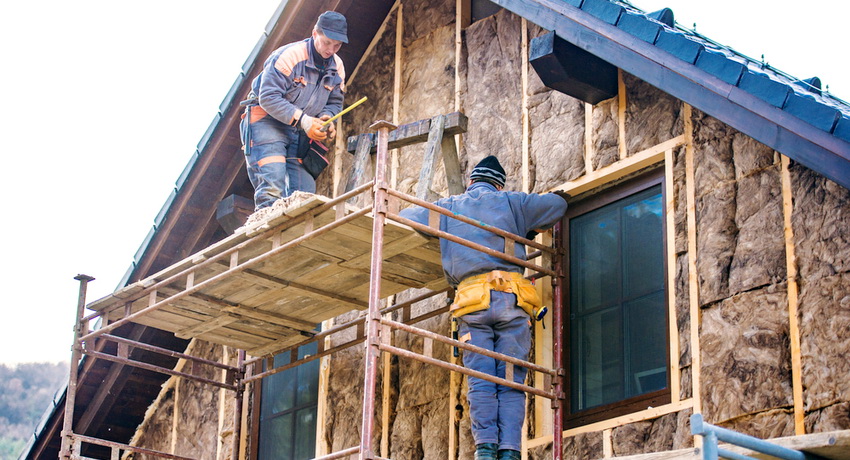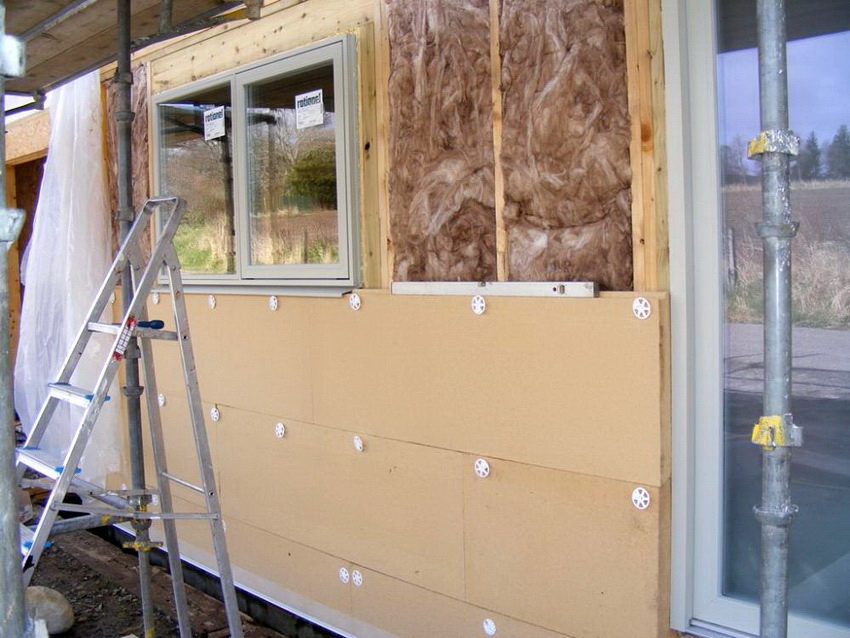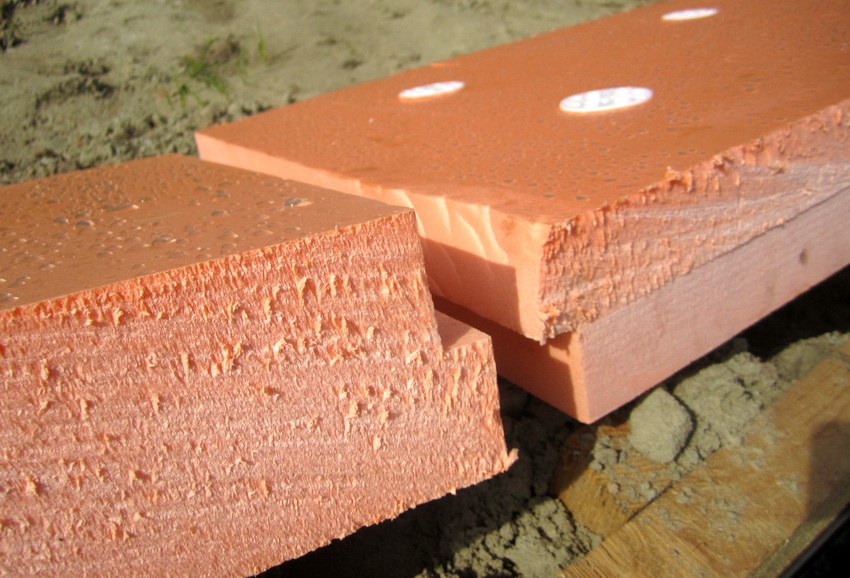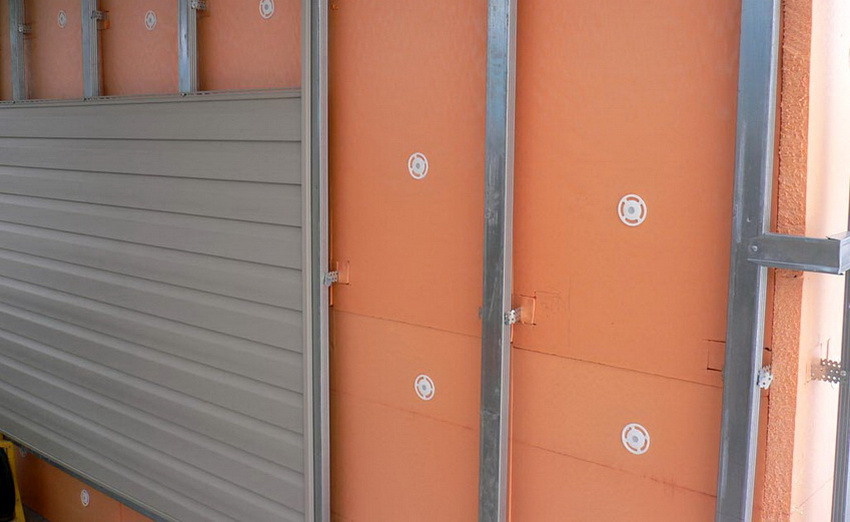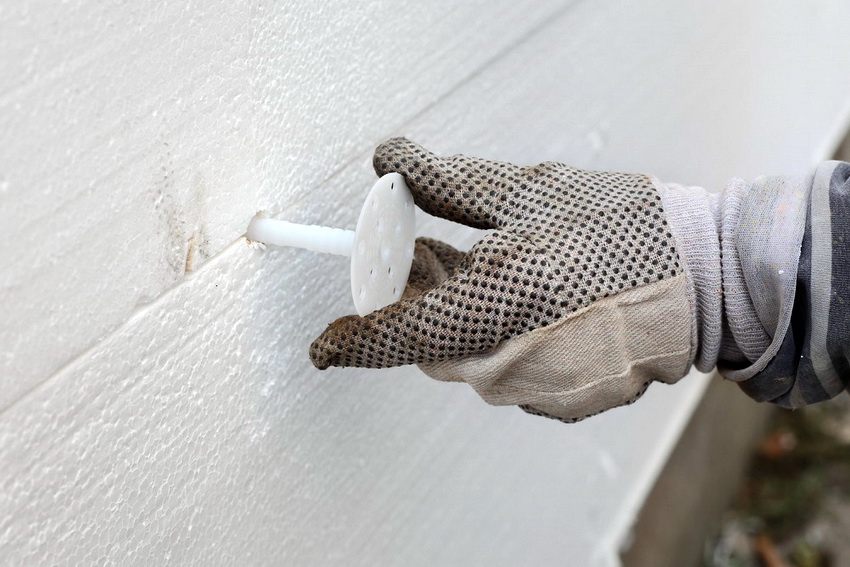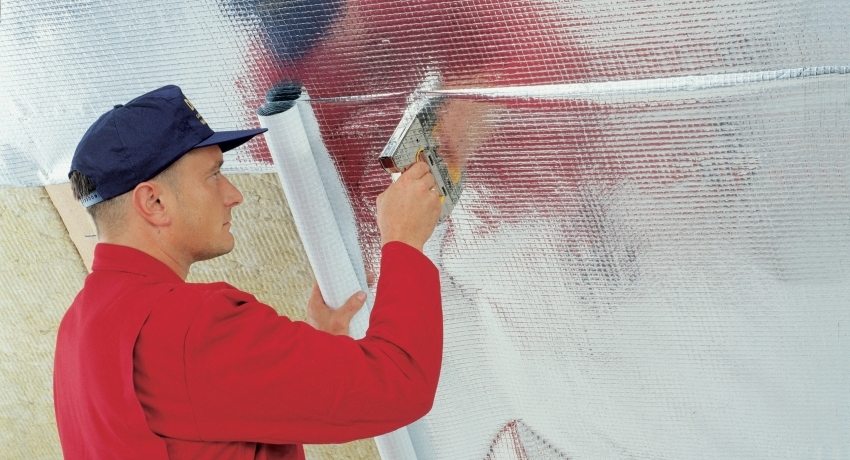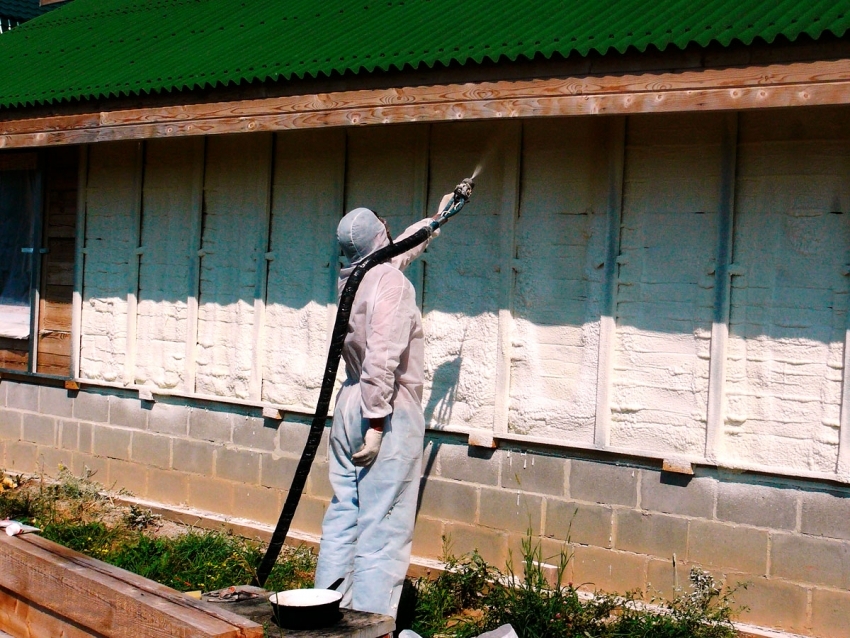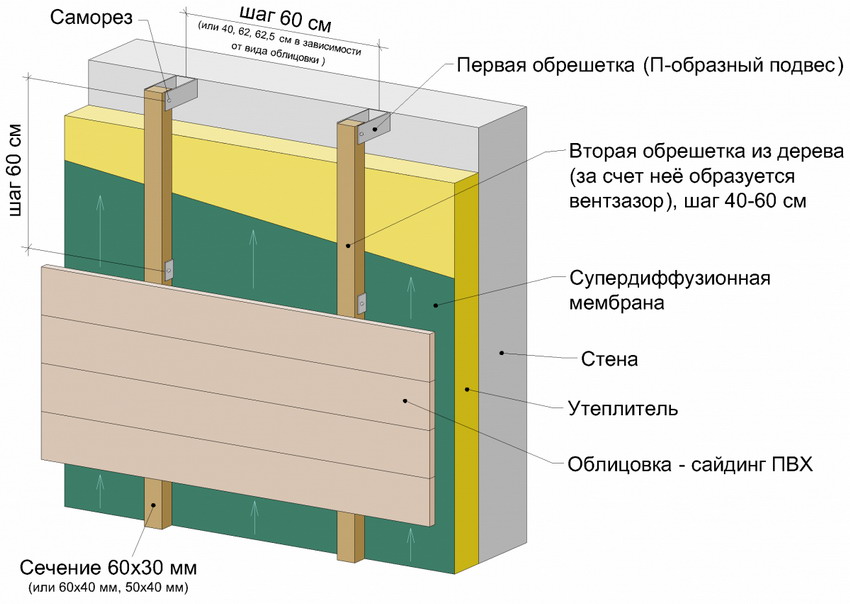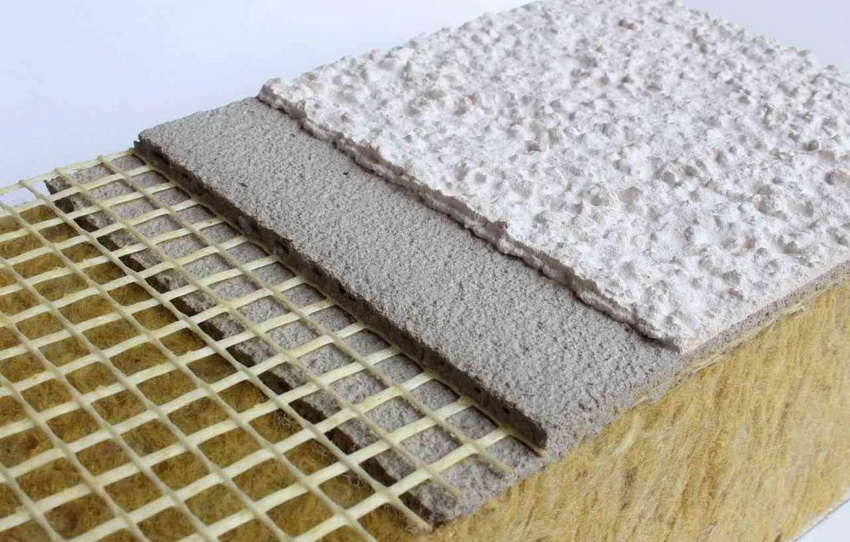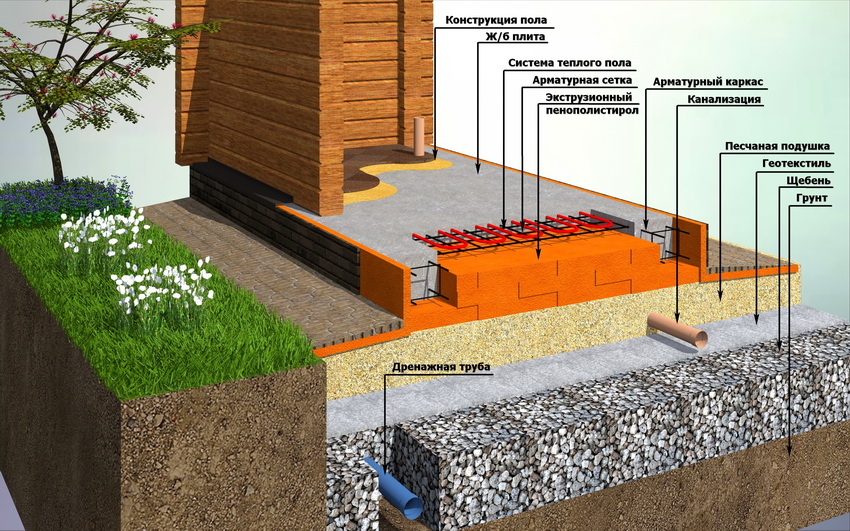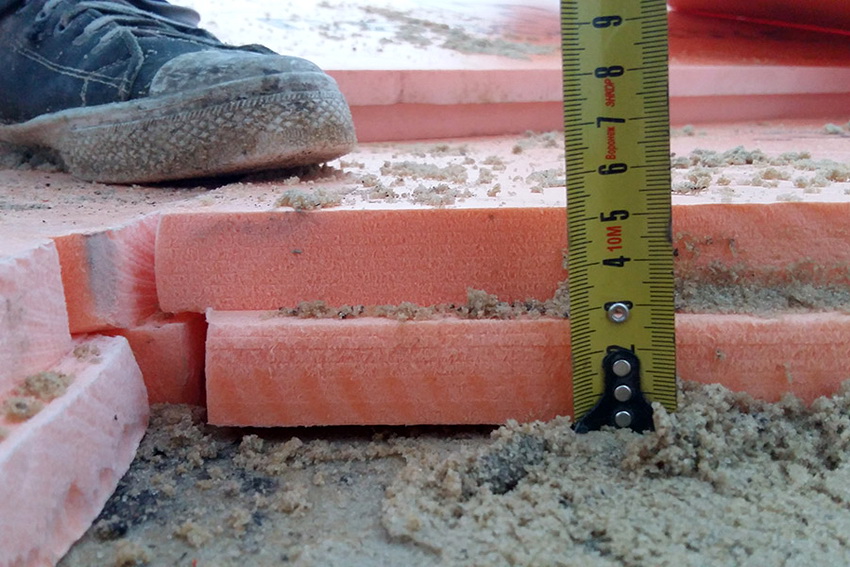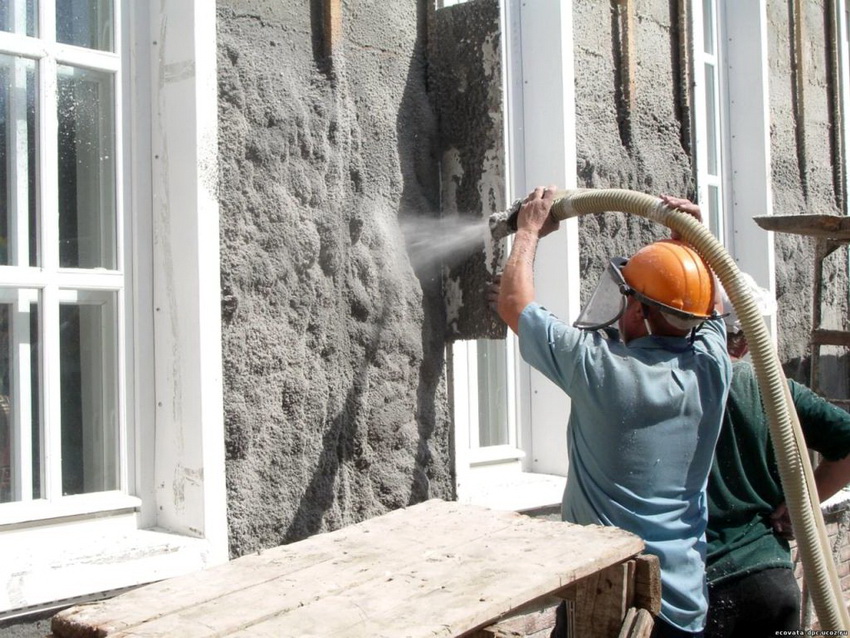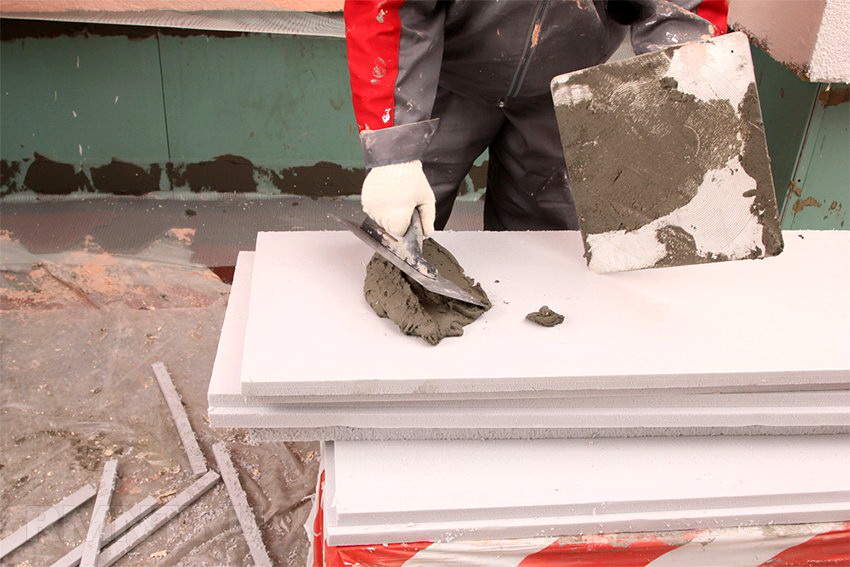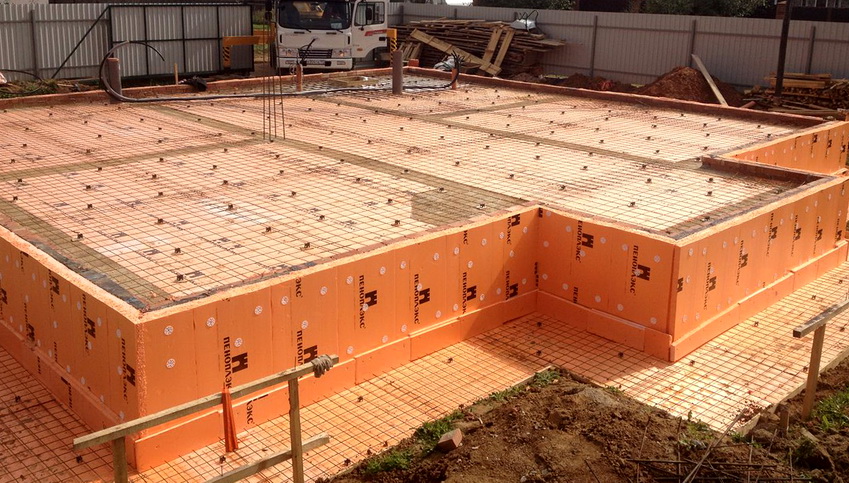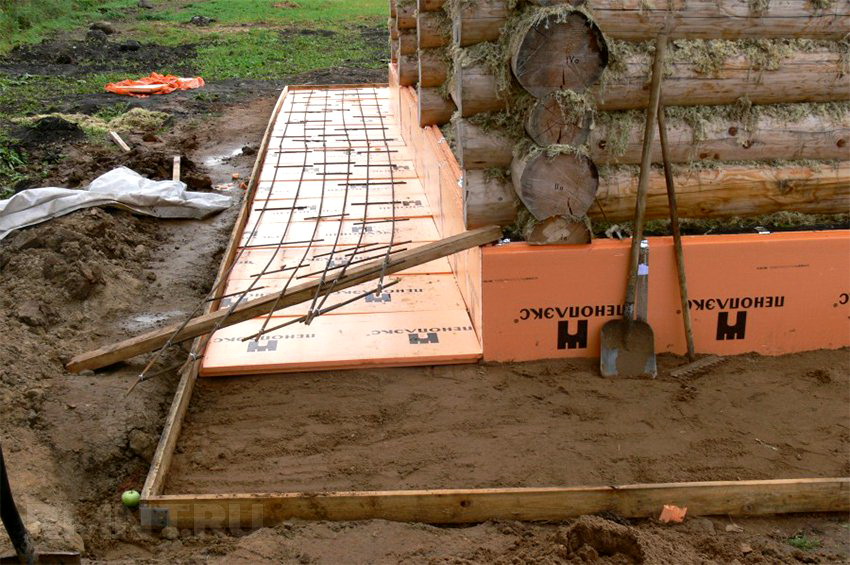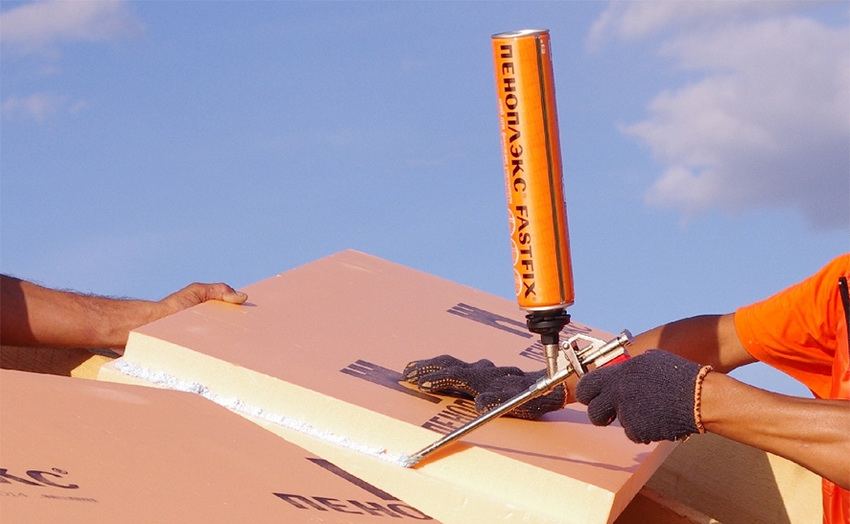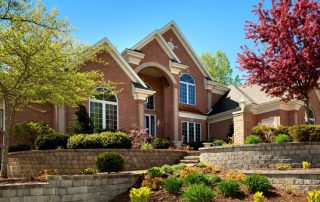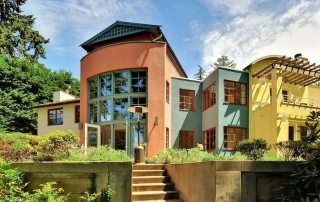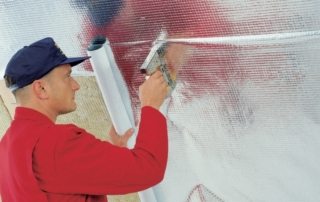High-quality home insulation is the key to a comfortable life in the cold season. Therefore, so that frosts do not bother in winter, you should think about the choice of material and technology of insulation in advance. This applies to all cases, including external insulation of a wooden house. Consider what you should pay attention to when choosing a suitable material, as well as how to do everything you need on your own when it comes to a building made of wood.
Content [Hide]
- 1 Insulation of a wooden house from the outside: the most common materials
- 2 Other materials used for external insulation of the walls of the house
- 3 Advantages of external insulation of a wooden house over internal
- 4 Features of the facade insulation technology with mineral wool
- 5 Insulation of the facade with extruded polystyrene foam: material features
- 6 DIY facade insulation technology with expanded polystyrene
- 7 Thermal insulation technology of a wooden house with polyurethane foam
- 8 Facade insulation technology with foam: features of material fastening
- 9 How to independently insulate a log house from the outside
- 10 Insulation of the foundation slab: is there a need for this
Insulation of a wooden house from the outside: the most common materials
There are a lot of thermal insulation materials. Some of them are very popular among consumers, while some, on the contrary, are rarely used. Let's consider what characteristics determine popularity, and what options are used more often than others:
- stone wool in slabs is a light and convenient material that can be transported without problems and can be cut even with an ordinary knife. These slabs are laid between the elements of the frame, and then covered with a vapor barrier and waterproofing material from different sides. The main thing is not to squeeze or tamp them during the transportation of mats, as they are easily deformed;
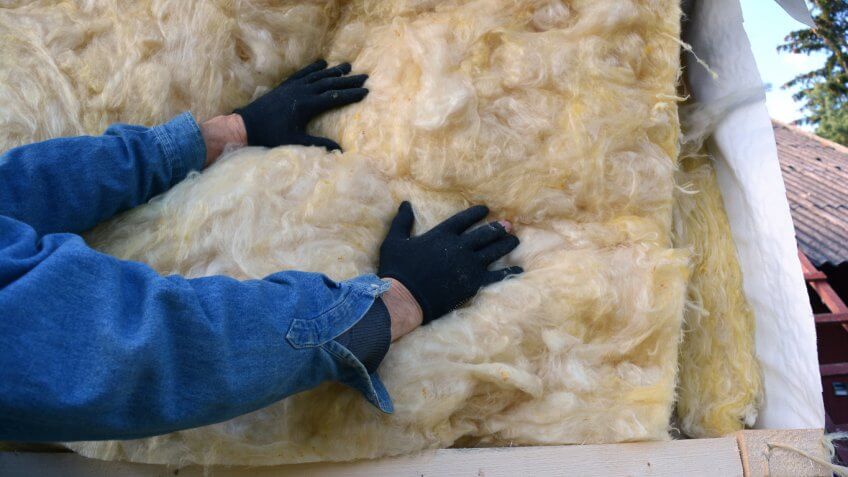
Various materials such as mineral wool, foam plastic, ecowool and the like can serve as a material for insulation.
- ecowool - a material created on the basis of cellulose, which is pressed and packed. For insulation with its help, you can use two options. In the first case, I take out the cotton wool from the open package, and slightly knead it, tamp it into the walls. It is difficult to say unequivocally how good this method is. Some manufacturers claim that with such insulation, you will not know problems for 10 to 20 years. Although the possibility of shrinkage and deterioration of the thermal insulation properties of the material cannot be completely denied.The second method is called wet, since ecowool is sprayed onto the walls, due to which the material seizes with the frame and the risk of settling is excluded;
- Styrofoam is a very common and cheap way to insulate a building. Its low cost is due to its fragility, fragility, as well as the need to additionally cover it with a moisture-proof membrane in order to avoid condensate accumulation in the future. It is important that for insulation you need to buy only unpressed foam sheets;
- polyurethane foam is a material consisting of two separate components mixed together under the influence of high pressure. On contact with air, it behaves in the same way as conventional polyurethane foam - it expands. Warming a wooden house with polyurethane foam is quite effective and minimizes heat loss. Besides, PPU tends to repel water;
- heaters of natural origin are a variety of mixtures and slabs made on the basis of sawdust, straw, clay, etc. The cost of this method is low, but choosing this option, you need to be ready to tinker. Natural insulation materials that are easy to use include, perhaps, linen fibers.

All materials used for wall insulation are made as environmentally friendly and harmless to human health
Other materials used for external insulation of the walls of the house
In addition to traditional materials, there are several other options that, although they have not yet gained such popularity, still often surpass those already considered in terms of characteristics.
- Basalt slabs for facade insulation... Price is the only drawback that can be found in this material. Despite the similarity with mineral wool, this material is many times superior to it in terms of technical indicators and characteristics. It provides excellent thermal insulation while being able to withstand heavy loads and temperature changes. Over time, it does not shrink and does not lose its characteristics. So its considerable, in comparison with other materials, cost can be called more than justified.
- Penoplex is a material that is rapidly gaining popularity, despite the fact that it has appeared on the market recently. The material is extruded polystyrene foam, characterized by low weight and good moisture resistance. This allows it to be used without laying additional waterproofing layers.
- Insulation "Arctic", consists of synthetic fibers, which are fastened together under the influence of hot air. The material is excellent for use in the harshest weather conditions. This insulation is considered breathable and provides good thermoregulation both in winter and summer.
Helpful advice! When working with any type of insulation material, personal protective equipment must be used to prevent the ingress of fibers into the respiratory tract and on the skin, as this can cause irritation.
Advantages of external insulation of a wooden house over internal
Choosing the right way to carry out work on the insulation of a wooden house is a guarantee of a high-quality result. Internal insulation of houses is used extremely rarely, since a thick layer of material will significantly reduce the area of the room. In addition, the insulation of walls in a wooden house from the inside will lead to the fact that the outer side of the walls will still be exposed to the cold, which will lead to freezing of wood.
Incorrectly carried out work and non-observance of the technology of warming a frame house can lead to the fact that the tree begins to rot from the inside and becomes a favorable environment for the life of fungi and mold. That is why the method is no less important than the choice of a material suitable for this purpose.
But with outdoor insulation, it is also important to ensure that couples are free to go out. Otherwise, the wood will deteriorate and it will be impossible to control the condition of the walls.
Features of the facade insulation technology with mineral wool
When laying the heat-insulating layer, it is necessary to provide the walls with waterproofing. Glassine is excellent for this purpose. Despite its low cost, it does its job perfectly. Initially, you need to cut strips from it and fix them to the frame with a stapler. In this case, the step should not exceed 12 cm.
Glassine sheets are glued with an overlap so that the overlap is about 10 cm. This prevents condensation from entering the thermal insulation material.
Helpful advice! If, after insulating the house, it is planned to be clad with siding, then you need to make sure that there is free space between it and the insulation (about 30-50 cm). This will prevent moisture from retaining in the frame.
When the glassine is fixed, you can proceed to laying the insulation. Minvata in this case is an excellent option, since it is not prone to fire and is easy to install. The main thing is that the thickness of mineral wool for wall insulation is correctly selected. For a temperate climate, this figure should be 80-100 mm, and for regions with severe winters, a material with a thickness of 150 mm can be used.
The technology of thermal insulation of facades with mineral wool provides for the following sequence of work:
- it is necessary to measure the distance between the posts;
- to the result obtained, add 5 cm to the allowance on each side;
- using a sharp knife, we cut the mineral plates for wall insulation to the desired size and lay them on the wall over the waterproofer;
- the joints between the frame and the insulation are additionally closed with cut strips 3-4 cm wide.
A layer of vapor barrier material must be laid on top. Penophenol, which is attached to the frame with a construction stapler, is excellent. After that, it remains only to sheathe the walls with siding or edged boards, depending on your desire, and you can consider the procedure for insulating a wooden house outside with mineral wool completed.
Helpful advice! It is necessary to lay penophenol strictly in a horizontal direction, while leaving joints 5 cm so that there is a foil part outside.
Insulation of the facade with extruded polystyrene foam: material features
Expanded polystyrene has an extremely low thermal conductivity, which allows it to be effectively used as a heat-insulating material, used for external wall cladding.
For the first time, extruded polystyrene foam was used in the USA, where it immediately gained popularity due to its characteristics. Its production consists in mixing a special composition consisting of carbon dioxide and freon with a granular polymer. The resulting mixture is fed under the influence of high temperature into a special apparatus called an extruder. Its task is to foam the composition and ensure high-quality mixing of all components.
The mixture obtained in the extruder is formed into plates, which solidify, forming a light and durable thermal insulation material. The advantages of this technology of wall insulation with foam from the outside include the low vapor permeability of the material, as well as durability and resistance to external factors.
According to the manufacturers, the service life of this material can reach 50 years if the laying technology has been followed.By its structure, expanded polystyrene is 90% composed of air, which is enclosed in cells.
Expanded polystyrene is always used specifically for external wall insulation, since the material has a considerable volume, and the internal insulation of the premises will lead to significant losses of free space. If we take into account the standard thickness of polystyrene foam for wall insulation 80-100 mm or 30-40 mm, laid in two layers, then such losses of usable space inside the house will be very noticeable.
At the same time, the effectiveness of this method should not be underestimated, since by using this heat insulator, savings of about 50% on heating costs are achieved. Although one cannot fail to notice the rather high price for the work. Insulation of the walls with expanded polystyrene outside, taking into account all the necessary finishing work, will cost from 1300 rubles per 1 m².
Helpful advice! In order to achieve the desired effect, it is necessary to carry out work at a temperature not lower than 5 ° C and as dry as possible.
DIY facade insulation technology with expanded polystyrene
Like any work related to surface insulation, it all begins with the preparation and cleaning of the wall from dirt and any excess mortar. Protruding reinforcement elements and just protrusions, which are not an architectural solution, can interfere. When all the excess is removed, it is necessary to seal up all cracks and crevices and prime the surface.
When the preparation is complete, it is necessary to install vertical sags. The easiest way to do this is with nylon cords fixed in increments of 0.5-0.7 m.With their help, you can see if there are holes or bulges on the wall and, if necessary, add more glue. Sometimes you have to slightly change the shape of the plate, using a special grater for this.
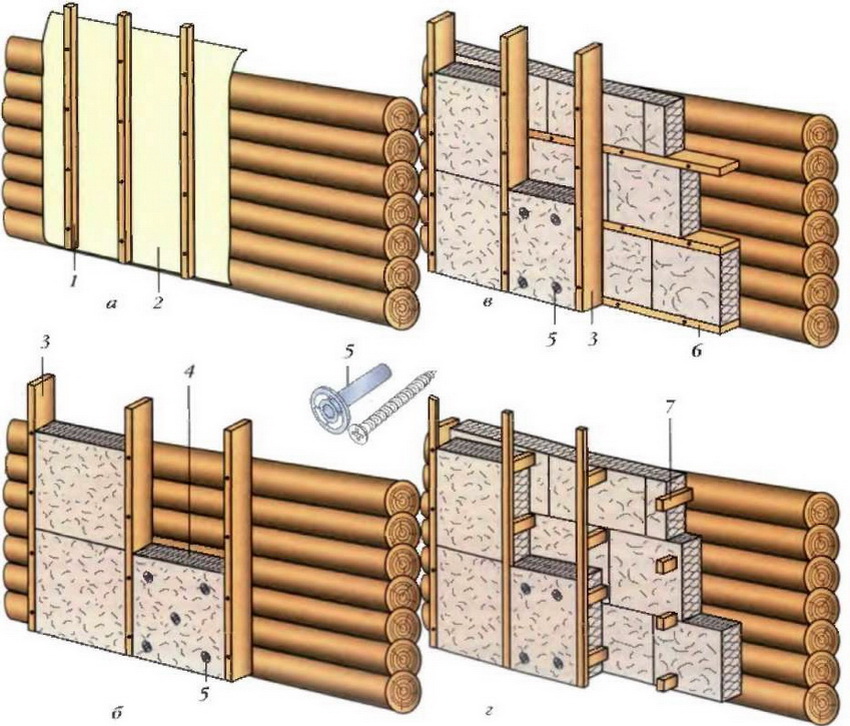
Wall insulation: a - rolled insulation, b - interframe in one layer, c - interframe in two layers, d - frameless in two layers; 1 - lathing, 2 - rolled insulation, 3 - vertical frame, 4 - slab insulation, 5 - fungus, 6 - horizontal frame, 7 - shorties
Helpful advice! In order for the final result to look aesthetically pleasing, check each laid element with a building level.
The technology of facade insulation with penoplex provides that the elements are fastened with a special adhesive mixture. It is prepared according to the instructions that come with it. It is important to use the prepared amount of solution within 1.5 hours if the ambient temperature is not too high. In hot weather, this period is reduced to 40-60 minutes.
The glue is applied to the slab along the edges, as well as in five places in the middle, regardless of what thickness the foam is chosen for wall insulation. This ensures its secure attachment to the wall surface. If you have to fix the thermal insulation material on a perfectly flat surface, then it is best to use a comb trowel to apply the solution.
If you need to lay not one, but two layers of expanded polystyrene, the laying should be done in such a way that the seams do not match. In addition, you will need to seal all the gaps between the slabs using small pieces of the same material or its liquid form. It is not recommended to use polyurethane foam for this purpose. And if there are any discrepancies between the elements in the places where they should touch, then this can be eliminated using the same float.
Finally, the insulation plates are also mechanically fixed in order to eliminate the risk of their delamination from the surface. At the rate of 5-6 fasteners per sheet, fasten them with disc dowels.
Thermal insulation technology of a wooden house with polyurethane foam
Unlike expanded polystyrene, mineral wool and other popular heaters, the technology of spraying polyurethane foam involves a very complicated procedure involving the use of expensive equipment. The thing is that in order for the coating to have the desired characteristics and be resistant to external factors, the mixture of the components of the solution must be supplied under the influence of very high pressure.
Related article:
Vapor barrier for the walls of a wooden house: materials and installation features
The main materials used for vapor barrier, their pros and cons. Features of the installation of vapor barrier inside and outside a wooden house.
However, such conditions are fully justified by the fact that the service life of such a heater is from 30 to 50 years. In addition, having made a choice in favor of this option, you can ensure the house is not only warm, but also excellent sound insulation, which no other material used for insulation can boast.
Another quality of polyurethane foam is the ability to take any shape, which makes it convenient to apply it to embossed surfaces of walls and beams.
True, doing all the work on your own, most likely, will not work, since purchasing expensive equipment is more than justified. It is much more rational to invite specialists for this.
The application of polyurethane foam to the exterior walls of the house is as follows:
- at the agreed time, a team of professionals comes to your home in a minibus, inside of which there is all the necessary equipment, as well as the components necessary for preparing the mixture;
- hoses are drawn to the places where spraying will be carried out, through which the finished mixture is fed;
- an even layer of polyurethane foam is applied to the prepared wall surface;
- after hardening, all excess is removed and cleaned.
Like any other insulation, polyurethane foam lends itself well to finishing. Using a reinforcing mesh, plaster can be applied on top later. And if you prepare the frame in advance, then it is possible to make siding cladding.
Facade insulation technology with foam: features of material fastening
Fastening foam elements to the wall is a task that requires attention if the choice is made in favor of this material. It is worth starting work by installing vertical canopies from a cord, which will help you to evenly position the first element.
According to the technology of insulating the house with foam outside, fastening is carried out using special glue, which is applied to the foam element along the edges, as well as at five points inside. This ensures secure fixation of the element. Thus, the entire insulation is attached. And in order to provide additional strength, you can also use plastic dowels, securing the sheets with them.
The technology of insulating walls outside with foam with their own hands is one of the simplest and most familiar, since this material is often used for various construction work and everyone, one way or another, came across it in everyday life. So the main task is to correctly choose the thickness of the foam for insulating the walls outside the wooden house and securely fix the material.
Obviously, it is impossible to lay the sheets in such a way as to avoid crevices and gaps. Therefore, they must be repaired with polyurethane foam... The next step is to plaster the surface and lay the reinforced mesh. This will protect the wall from the destructive influence of external factors. However, one layer will not be enough here, it is necessary to apply at least two layers of ordinary and one decorative plaster in order to give the building an aesthetic appearance.
How to independently insulate a log house from the outside
Rigid tile materials are best suited for insulating houses from a bar, since they have sufficient density and are not subject to shrinkage over time. It is also important to choose the correct thickness of the heat insulator. So, for example, for walls 20 cm thick, a layer of thin material - 5 cm is enough.And if we are talking about insulating a house from a 150x150 bar outside, then it is better to give preference to an insulating material 10 cm thick.
It is worth starting work with surface treatment with mastic, which repels water. After that, you need to install a wooden frame that will hold the insulation and become the basis for fixing the finishing finishing material.
Helpful advice! All elements of the wooden frame must be treated with antiseptic agents that prevent rotting and protect the wood from moisture.
Basalt wool, which is attached to the surface of the walls with self-tapping screws, is best suited for insulating a house from a bar. Mounts should be positioned at the rate of 4-6 pieces per 1 m². A diffusion membrane must be laid on top, which acts as a waterproofing agent.
Slats 5 cm thick are nailed to the wooden frame.Their task is to create a ventilation gap that will not allow moisture to accumulate. And already the finishing material is attached to the slats themselves.
The cost of facade insulation with different materials can vary greatly. Much depends on how serious the costs are for the production of one or another insulation. And sometimes you have to take into account the need to purchase additional materials, for example, vapor and waterproofing layers, if necessary.
So, for example, the price for insulation of a facade using expanded polystyrene will be about 1600-2000 rubles per 1 m². But this is if all the work is done by a professional. If you do everything yourself, you can save a lot, because the cost of the most ordinary sheets does not exceed 30 rubles, although it happens that you need a stronger and thicker material.
Insulation of the foundation slab: is there a need for this
Another way to insulate a house is to use modern materials for finishing the foundation slab, which, like walls, often becomes a source of freezing of the building and over time can begin to collapse under the influence of external factors.
For many, the need to insulate the foundation slab is also justified by the opportunity to significantly save in the future, spending 1.5-2 times less resources on heating the house.
However, simply purchasing and attaching a heater will not be enough. It is necessary to ensure the full functioning of the system, having thought out a method for removing moisture and preventing the development of fungi, mold, as well as corrosive processes inside. This requires accurate engineering calculations that will allow you to move the point outside the outline of the main part of the building.
In addition, one cannot but take into account such a phenomenon as soil swelling, which is characteristic of the winter period and can create significant pressure on the elements of the building located in the ground. Therefore, among the tasks that are set for the insulation material for the foundation slab, there is also protection against this kind of mechanical stress.
Restoration and insulation according to Swedish technology: features of the method
Insulation of foundation slabs using Swedish technology is one of the best foreign technologies that became available in our area not so long ago. Let's consider what are the advantages of this method, and what are its main technologies:
- the method suggests the creation of a single solid structure, consisting of reinforced cast concrete, equipped with stiffeners.Installation is carried out on a special pillow, which is surrounded on all sides by polystyrene foam plates;
- sand is poured under the bottom of the insulation, as well as on the sides of it;
- installation of a special system for collecting and discharging water into the drain is provided;
- in order to reduce the load on the drainage system, a blind area is provided;
- inside the house, a floor heating system will be provided, which is built into the foundation even at the stage of its construction.
It is interesting that in Sweden this technology has been used for more than half a century, but in Russia it began to be used no more than 10 years ago. But even during this short period, some of the features of this technology became obvious:
- this method is great for building one-story and two-story houses. But if we are talking about the construction of tall buildings, then a large number of calculations will be required, as well as permission in all official instances;
- Even at the design stage, care must be taken to eliminate the risk of flooding the building. For this purpose, a sand bed of the required height is installed. It is possible to determine the necessary parameters by taking into account those statistics that are considered official for a particular region;
- it is necessary to take into account the individual characteristics of the area on which the construction is carried out and, based on the available data, use standard or reinforced drainage and waterproofing systems;
- if construction is to be carried out on soils in which sand predominates, then there is no need to install a water drainage system;
- as in all other cases, when it comes to working with concrete, it is recommended to carry out all work in the warm season, since the low temperature significantly increases the risk that the resulting structure will not end up being strong enough;
- even if a team of specialists is involved in the work, it takes time to implement this technology. This usually takes 3 to 4 weeks.
Interesting to know! Subject to the high-quality performance of all the insulation work and the presence of a "warm floor" system, even if the heating is completely turned off, the heat in the house will be maintained for 72 hours.
Choosing the right material for insulating the foundation slab
When deciding to use Swedish technology, you need to understand that not all materials that we are used to using as insulation are suitable for its implementation. First of all, consider those that are categorically inappropriate for this purpose:
- Mineral wool and all kinds of its analogues. Not having sufficient rigidity and strength, they also tend to absorb water, which is unacceptable in such operating conditions.
- Expanded clay and other granular materials. Their main problem is the inability to form a dense layer around the foundation, because of this, they allow moisture to pass through.
- Foam polymers, the creation of which is carried out directly on construction sites. And although in this case there is no unequivocal prohibition, such a technology requires a lot of experience and complex expensive equipment. Although even the presence of these factors still cannot guarantee success.
Based on the foregoing, it becomes obvious that the ideal option for insulating the foundation of a house from the outside is expanded polystyrene. Its characteristics are fully consistent with all the requirements that apply to the material to solve all the tasks.
Among these properties, the following are worth noting:
- the standard dimensions of each slab greatly facilitate the process of their laying, allowing calculations to be made according to the available data, and ensuring high-quality and even joints;
- some manufacturers produce slabs equipped with special grooves on the sides, which additionally ensures the tightness of each joint;
- the material is very durable and absolutely impervious to moisture;
- high thermal insulation properties allow high-quality insulation without laying many layers of material or one, but too thick. One layer of slabs of standard thickness will be enough.
You can also insulate the blind area with extruded polystyrene foam, which will further reduce the overall heat loss of the building through the foundation and provide additional savings.
Foundation insulation technology with extruded polystyrene foam
The process of warming a foundation slab consists of several stages. Let's consider each of them, paying attention to the nuances of the work, as well as the difficulties that may arise during the installation process.
To carry out this type of work, the use of a 10 cm thick foam is considered quite sufficient. The only requirement is that the material must be of high quality and purchased from a well-known manufacturer.
Helpful advice! When purchasing any building materials, including expanded polystyrene plates, it is better to request a certificate from the seller for the proposed products. Before making a purchase, you must make sure that the product meets all specified standards.
Site preparation consists in assessing the existing geological features of the site, as well as the type of soil that will have to be worked with. In the process of digging a hole under the foundation, you need to make sure that the bottom is as flat as possible. To do this, at the final stage, it is recommended to dig the hole by hand.
A layer of sand is poured at the bottom of the pit, which is compacted without fail. Then the temporary formwork is installed and the first layer of concrete is poured. At this stage, it is not yet envisaged to use any elements for reinforcement.
After the first layer of concrete has hardened, polyurethane foam plates are laid on top, which are arranged in two layers in a checkerboard pattern. All joints and seams must be sealed to exclude the possibility of moisture getting into them. All this is covered from above with a layer of strong plastic film, laying it with an overlap and carefully gluing the joints with adhesive tape.
It remains only to fill the main part of the foundation, which provides for the mandatory presence of reinforcing elements and is carried out according to standard technology. After the concrete has completely hardened, foam polystyrene plates are attached to all end parts using a special adhesive.
As you can see, the technology of warming the foundation with extruded polystyrene foam is not too complicated, if you familiarize yourself in advance with all the requirements for materials, as well as the order of work.
The fact that the external insulation of wooden houses significantly bypasses the internal one in terms of efficiency, has already been proven more than once in practice. Although much, of course, depends on the correct selection of heat-insulating material, and on compliance with all technology requirements. Fortunately, the modern market is rich enough to offer customers a wide range of materials for thermal insulation of wooden houses.
